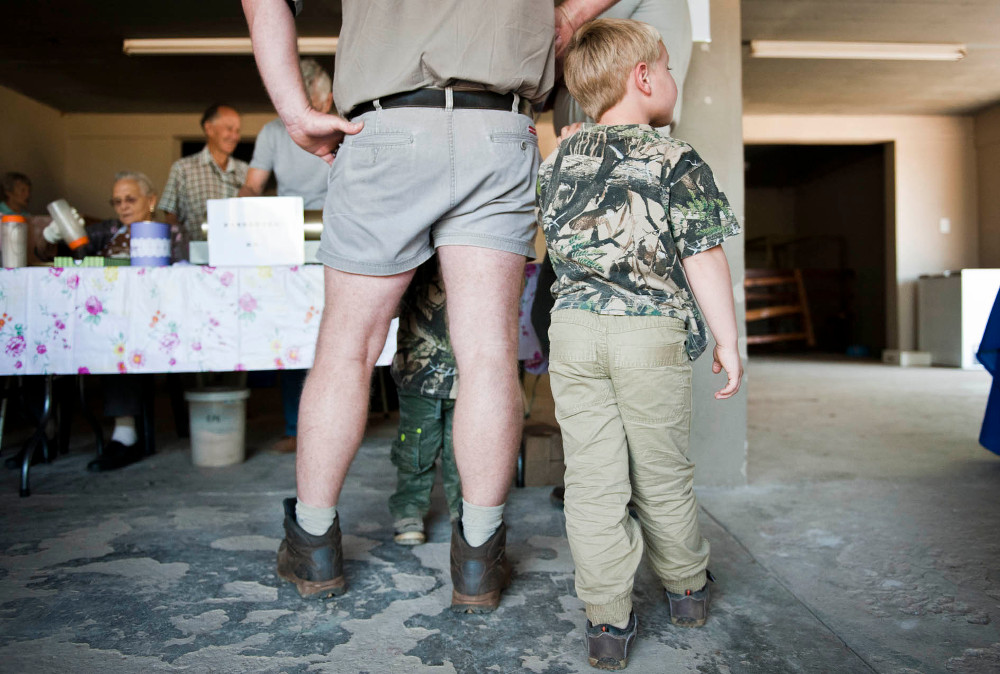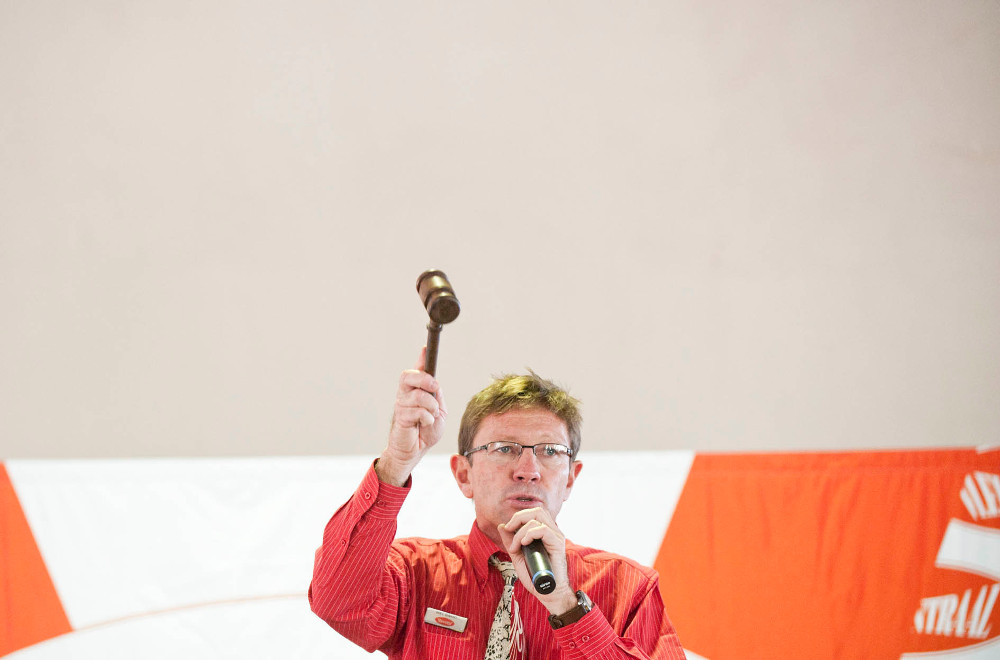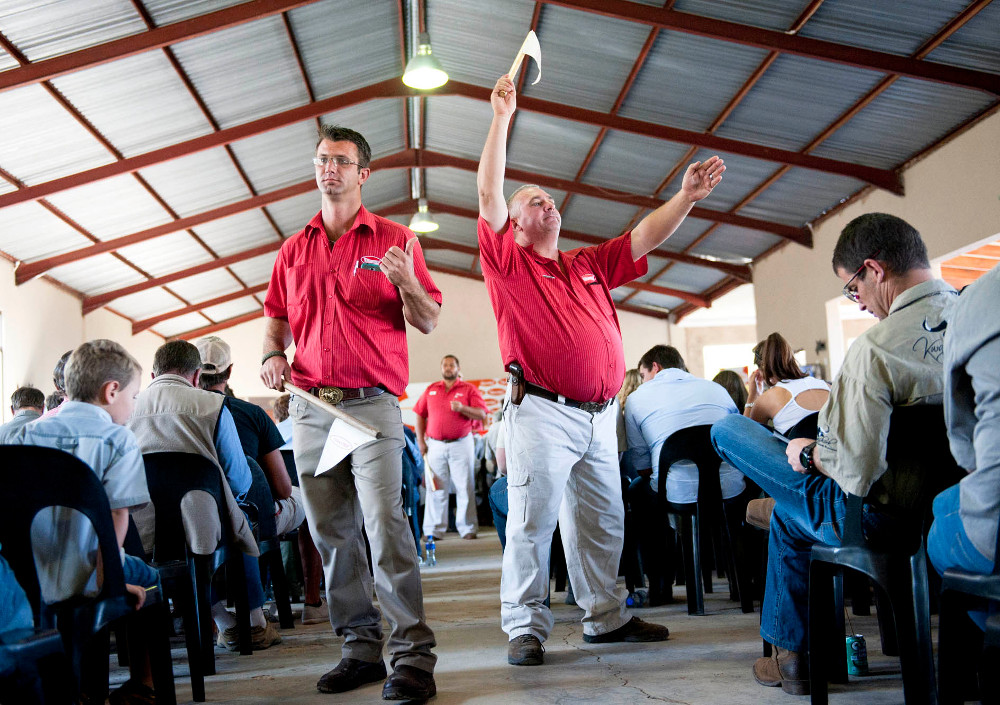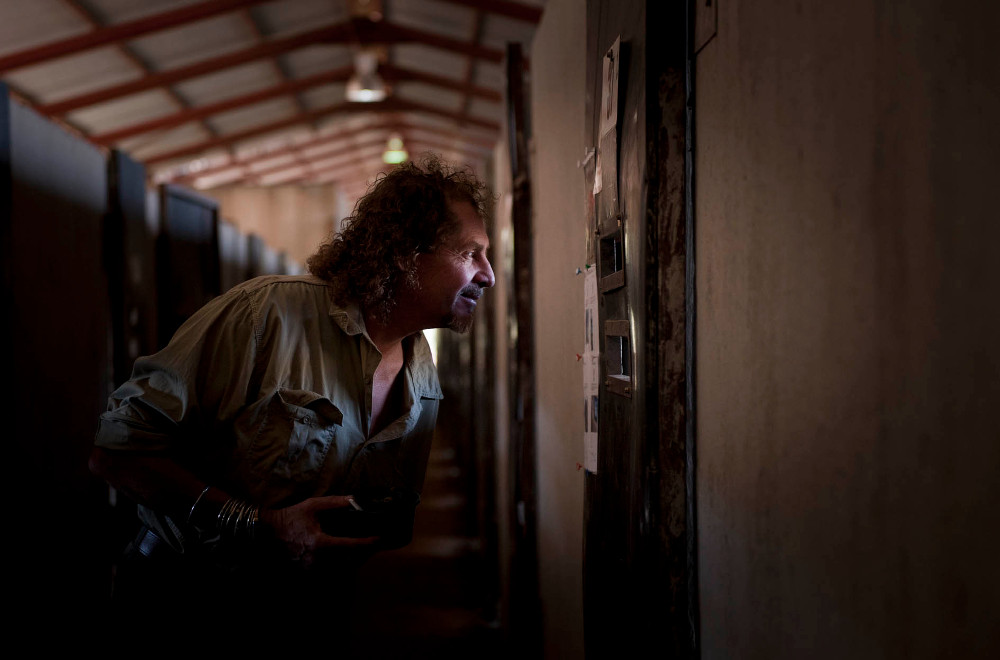It is 11am on a Saturday at the Thaba Manzi ranch in Bela-Bela and the festivities have started. Behind row upon row of 4x4s in the parking lot, and several choppers parked on the lawns, rhino and buffalo soak up the sun in an enclosure.
Walking towards the action, a rhythmic hum becomes audible as auctioneer Neil Swart expertly drives up the prices of the goods. There are hundreds of attendees, mainly men dressed in denim and khaki, so many that they have spilled out of the warehouse and are seated on the stoep.
Children play on jumping castles and onlookers devour bowls of curry and rice (accompanied by banana, chutney and desiccated coconut) or pancakes dusted with cinnamon and sugar, which are being sold near the main event.
The goods up for auction are wildlife, including the so-called plain game – kudu, springbok, nyala and giraffe. But it’s the colour variants (some call these the exotics), such as the black or coffee impala, yellow blesbok, golden wildebeest or red oryx, that can achieve prices that run into the millions.
Colour variants of the so-called saddlebacks are also all the rage and can make a few million rands difference to prices. A white blesbok ewe achieves a price of R15 000 at the auction, but one with white saddles is sold for R4.2-million.
Auctioneer’s brew
Between lots, Swart sips on his mix of hot lemon and honey, from a silver Thermos flask. It’s to help his voice along, and it’s certainly needed for the next four-and-a-half hours. There are 53 sellers at the auction, which is being hosted by Wildlife Ranching South Africa.
The prices achieved at this auction, one of the smaller ones of the year, range from R2 800 to R4.2-million.
The highest price for a giraffe is R16 000, and R26 000 is paid for a pregnant nyala ewe, R28 000 for a copper springbok ram, R1.3-million for a saddleback impala and R1.8-million for a roan antelope bull. A buffalo bull fetches only R120 000. The total tally for the day is R35.57-million.

There were hundreds of auction attendees, mainly men dressed in denim and khaki. (Madelene Cronjé, M&G)
But these prices are not particularly high because the breeding season has started and most farmers have already bought breeding stock. “Demand pushes up the price. At the moment, price is normal,” said Swart, an auctioneer for Vleissentraal.
But the saddleback blesbok are still able to fetch a high price because they are scarce. “The breeding season didn’t have any influence because they can’t get them,” said Swart.
Hot topic
The prices are certainly a hot topic among everyone there. Then again, it’s a hot topic industrywide. According to data compiled by Flippie Cloete, a professor at North West University’s environmental science and management unit, the turnover of formal auctions tallied R105-million in 2004, with 21 100 animals sold.
In 2014, the number of animals sold was 29 300, but the value was ten times higher at R1.88-billion. Between 2013 and 2014 alone, the average auction price of a yellow blesbok went up by 450% and the price of a common impala by 95%.
But formal auctions give just a glimpse of the trends; it’s estimated most of the transactions – probably more than 90% – take place in the informal market.
Gert Dry, the president of Wildlife Ranching SA, reported that an estimated 167 444 head of game were moved or traded during the 2010 season, yet only 14 976 animals were recorded as sold at formal auctions.
There are several theories about what is driving the price of these animals, and the suggestion that the industry is in bubble territory is being hotly contested.
Bubble territory
Most notably, tycoon Johann Rupert, who bought a buffalo for a tidy R40-million, told the farming journal Landbouweekblad in September last year that rare game breeding could be in bubble territory.
An economic bubble, according to the Nasdaq website, is a market phenomenon characterised by surges in asset prices to levels significantly above the fundamental value of the assets.
But, it adds, bubbles are often hard to detect in real time because there is disagreement over the fundamental value of the assets.

Niel Swart conducted the four-and-a-half-hour auction. (Thapelo Maphakela)
The South African Hunters’ and Game Conservation Association also believes this is where the market is heading and has raised a number of concerns about the selective and intensive breeding programmes that have been on the rise to breed rare colour variants or animals with impressive horn length.
Fred Camphor, the president of the association, which represents consumptive hunters, said the breeding of expensive game was now aimed to force certain traits, “maybe horn length, size of the animal, colour of the skin”.
“They are still making money out of it and making good money out of it. You will make more than on the stock market, but it’s not going to last forever.”
Consumptive hunters
Camphor said consumptive hunters were not the market for these expensive, selectively bred animals.
“As a hunter, I would not pay more because an animal has a black skin. Consumptive hunters don’t come to see different coloured game fenced in small enclosures,” he said. “The present situation is largely breeders selling to other breeders. That is exactly why we say there is a bubble. There must be an end user.”
Camphor’s main concern is about the increase in the price of plain game, at least in species such as impala and wildebeest.
The plain game females can be mated with variant males to produce offspring with a recessive colour-variant gene.
At a game auction on February 13 this year, ordinary impala ewes sold for R30 000 each. For hunting purposes, an impala ewe would cost between R800 and R1 000.
“This drives the cost of consumptive hunting to unaffordable levels to the detriment of the hunting sector,” Camphor said.
Investment seminars
He claimed Wildlife Ranching SA and other market players where driving prices up by holding regular investment seminars. “That’s the way to bring in new investors and keep price structure high,” he said.
There are about 300 000 consumptive hunters in South Africa who contribute more than 74% to the total annual income derived from the hunting and wildlife sector. In 2013, they accounted for R6.3-billion of the R8.5-billion generated by the sector.

The auction at Thaba Manzi near Bela-Bela drew hundreds of people, including buyers and sellers. (Thapelo Maphakela)
It is often thought the variant animals are destined for the trophy hunting market, but not so, according to the Professional Hunters’ Association of South Africa (Phasa).
“Our market lies with the overseas market. Our clients from abroad are predominantly trophy hunters and they mostly target male animals and older animals past their breeding cycle,” said Hermann Meyeridricks, Phasa’s president.
Trophy hunting
Trophy hunting doesn’t necessarily mean animals with big horns, he said, even though there was an emphasis on breeding animals with large horns.
“We don’t see the hunting demand on massive horn sizes and we have very little demand for all the new colour variants. But we respect, within the realms of what is responsible and legal, you can maximize return through breeding these animals.
“But the colour-variant market is definitely not driven by the trophy-hunting market.”
He added that the rising cost of some species was also of concern to Phasa because it has caused uncertainty about prices, even those in the near future. It was creating practical difficulties for Phasa’s members because clients often booked up to three years in advance.
“Prior to the boom in the intensive breeding industry, it was a fairly straightforward thing. You could secure prices with landowners in advance and set prices with clients ahead of time,” he said.
Volatile pricing
But the price of a kudu bull, for example, had been so volatile that it created a lot of uncertainty. Some landowners were unwilling to agree on prices now in the hope that the animals would be worth a great deal more in future.
“It’s not across the board these things we are seeing, it is not the case all the time,” Meyeridricks said. In fact, the prices of sable and buffalo bulls had come down.

Colour variants are all the rage, although biltong hunters place little value on the shade of the kill. (Madelene Cronjé, M&G)
“There is more sable now than you can shake a stick at. They used to be scarce but now in Limpopo you can find one on every farm under every tree.”
Further price hikes for other species and prolonged uncertainty could see South Africa losing its competitive edge. Meyeridricks said South Africa hosted up to 8 000 hunters from abroad each year, who collectively spent more than $1-billion a year in the country.
‘Out of the market’
“When prices become uncertain and excessively high, we may price ourselves out of the market. Hopefully the market will correct itself,” he said.
“We don’t want to find ourselves in a situation where we can’t provide competitive prices.”
The price of the females in some common species were also spiking. “That drives the price up for impala and blue wildebeest, and those were typically bread-and-butter species for biltong [consumptive] hunters as they were affordable and abundant.”

The price of game has outperformed the JSE and caught the eye of investors. (Madelene Cronjé, M&G)
Peet van der Merwe, a professor of tourism at North-West University, said: “Now people outside the game farming industry are buying these animals as an investment. That has created more demand. If you look at the game farm industry still growing, there are people entering. So I think it’s a normal demand and supply system,” although, he added, it was unrealistic to think these prices would last forever.
Breeders of scarce animals claim they are replenishing what has been depleted by hunting.
Game breeding regulation
In February this year, the South African Hunters’ and Game Conservation Association called for regulation of intensive commercial game breeding in the interest of protecting the country’s biodiversity and its international reputation as a leader in conservation.
The association said the effect of intensive breeding could:
- Lead to the fragmentation of habitats and wildlife systems;
- Lead to a decrease in the genetic integrity of indigenous wildlife populations;
- Reduce animals’ natural ability to adapt to environmental changes associated with climate change;
- Lead to increased persecution of predators because of the threat to breeding stock; and
- Lead to disinvestment in extensive wildlife areas, which affect the contribution that game farmers make to national conservation targets.
Camphor said he did not want to see the government intervene. He would rather see better discipline and self-regulation in the industry.
“We would just like to see game breeders being responsible with what they do and not bring risk to the meta-population of game in the country, while claiming that it is done in the name of conservation or hunting.”
Conservation
Jacques Malan, a leading buffalo breeder and former president of Wildlife Ranching SA, said farming the species meant conserving it at the same time. But that kind of conservation had to be commercially sustainable, and that was where purists would differ, he said.
Malan said the South African National Biodiversity Institute had commissioned a study of the risks the breeding of colour variants posed to biodiversity and found no scientific proof that it affected it negatively.
He said consumptive hunters were concerned because they wanted to hunt cheaply and, “due to the fact that game farming adds value, is driving the price up”.
He added that there were markets for the different species and more expensive variants, just as was seen in the bird or plant markets.
Words of warning for those out to make a quick killing
Peter Flack, lawyer, businessman and hunter, published a post on his blog last year titled Pyramid Schemes and the Breeding and Manipulation of Colour Variants and Other Unnatural Freaks.
He warned: “Unfortunately, the old adage, ‘If it sounds too good to be true, it probably is’, is as true today as it was at the time of the Kubus pyramid scheme. Remember that? Those who are already involved in this dubious and controversial business should take note and those who are not but are considering entering into it should think carefully before proceeding further.”
In response to Flack’s post and other bad press, game breeder Richard York, in a letter published on Flack’s blog in January this year, said: “The game industry is debt-free with minimal lending and gearing is by no means a factor as farmers cannot bond an individual animal through their bank to buy another animal.
“It’s important to remember that animals provide an annual dividend in the form of a lamb or a calf to their owners.”
Jacques Malan, buffalo breeder and former president of Wildlife Ranching SA (who is tired of talking about bubbles), said a little bit of debt was always involved, “but it is not like I can go to my bank and ask for a loan to buy four blesbok”.
York noted that the Safari Club International hunting record book has registered 802 white blesbok, six black impala, 921 black springbok, 168 copper springbok and 699 white springbok – a combined total of almost the same number of standard-coloured springbok that have been registered.
“Clearly there is a demand or potential demand to hunt colour variants. We have an exceptional marketing opportunity – it would seem foolish for us not to create market awareness about colour variants,” York wrote.
Malan said the industry was not producing one product but a variety of species all subject to their own supply-demand dynamics.
Asked whether novices were investing too much too quickly, Malan said: “This is what happens in life. People get involved in projects they know nothing about; they make mistakes and rectify them. That happens with anything in life. The good thing about the game-farming industry is if you make a mistake you lose a lot and then your ears open very quickly.”